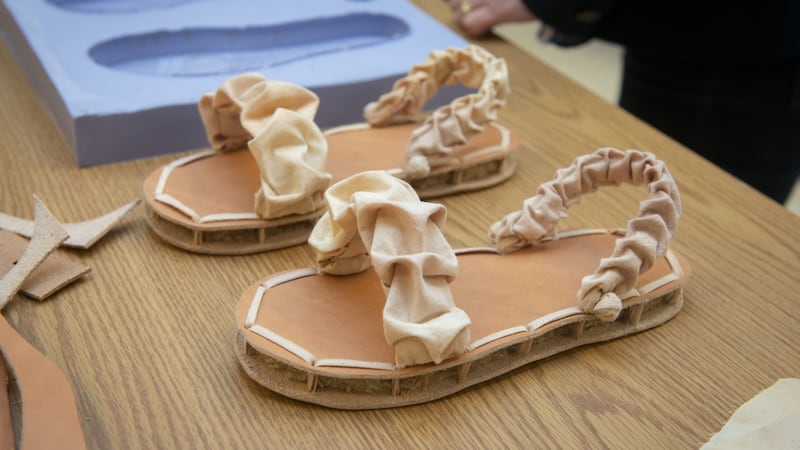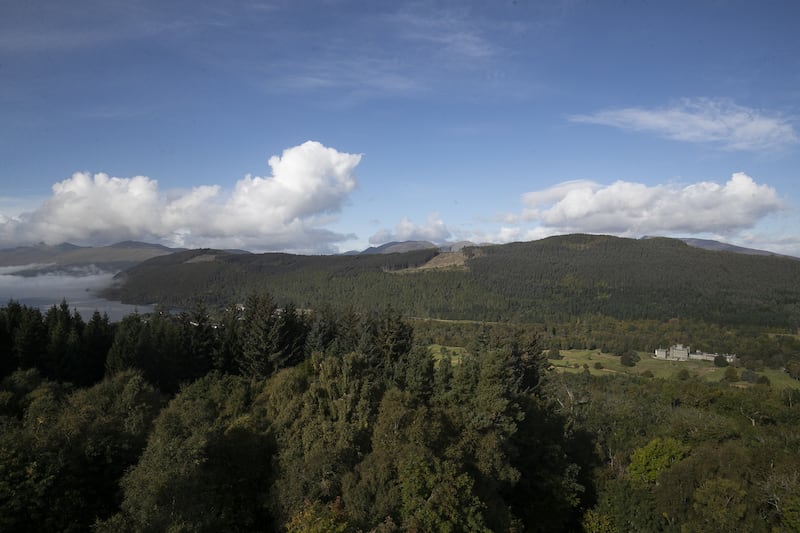US researchers have designed biodegradable shoes aimed at helping to tackle the waste that comes from fashion consumption.
Their prototype shoes, which were recently unveiled at the USA Science and Engineering Festival in Washington, were created using mushrooms, chicken feathers and textile waste.
Masters degree student Jillian Silverman and undergraduate Wing Tang, both from the University of Delaware, created a bio-composite material using mushrooms and chicken feathers that forms the sole of their prototype shoe with help from professors Huantian Cao and Kelly Cobb.
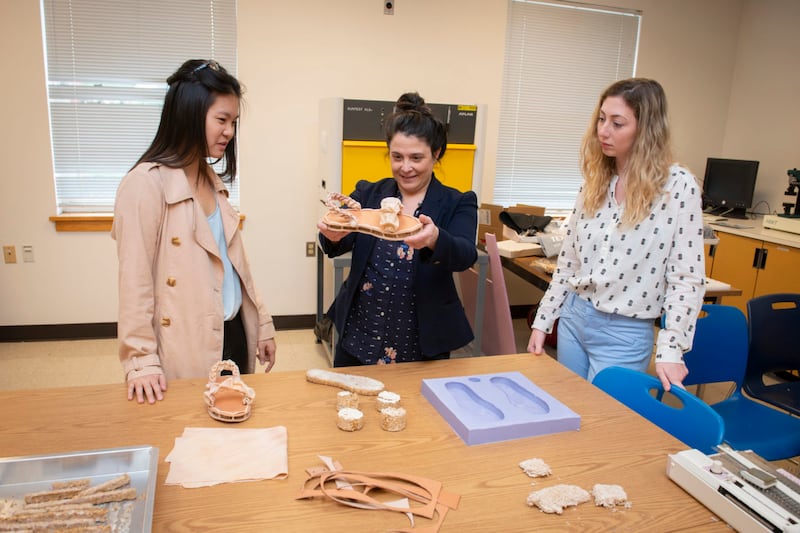
The team was invited to take part in the festival after receiving 15,000 dollars (£10,476) in support from the Environmental Protection Agency (EPA).
Ms Silverman said: “The fashion industry produces a lot of waste, so sustainability is an issue everyone is trying to address.
“It’s hard to believe that people are going to change their consumption habits, but with this shoe, when someone gets tired of it or it wears out, it can go into the compost pile and not the landfill.”
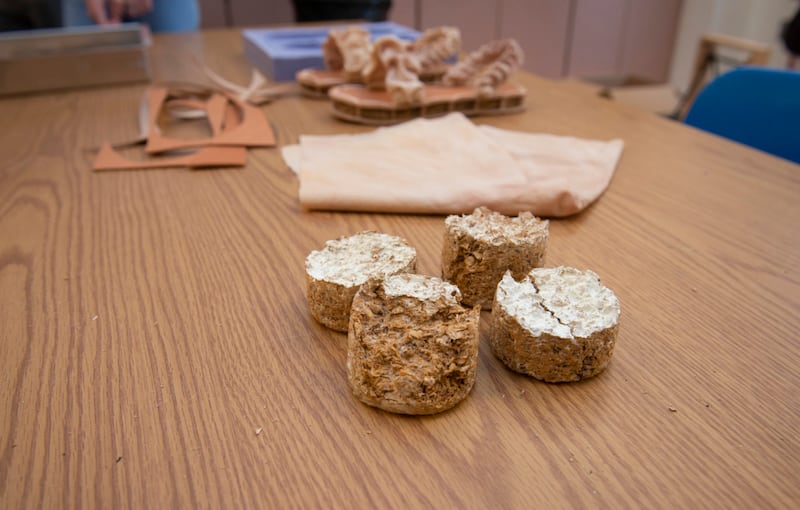
The team experimented with different mushroom species, looking in particular at how the mycelium – mushroom roots – forms its network of roots.
For the prototype sandals, the mycelium – which was mixed with chicken feathers and other materials – was grown in a soft mould in the shape of a sole so there would be no waste from cutting it into that shape, according to Prof Cao.
He said: “Chicken feathers were used as a component in the composite shoe sole for three reasons – for providing nutrients for mycelium growth, for providing structural support for the composite and improve composite strength, and for finding a way to utilise the abundant locally available waste, which is costly to dispose of.”
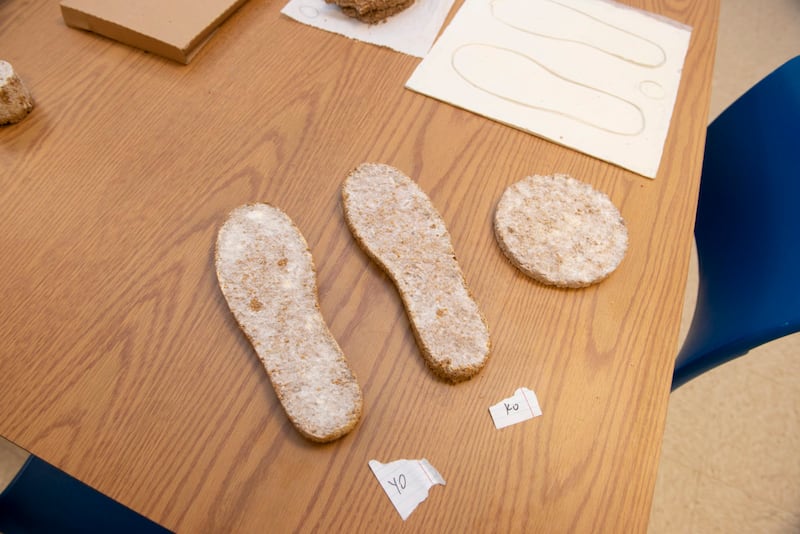
Ms Silverman added: “As the mycelium grew outward, it consumed portions of the feathers as nutrients while binding the feather fibres together.”
The team used a type of vegan leather to cover the sole and make it more durable.
Then using discarded scraps from muslin fabric, Ms Tang then designed and made the top of the shoe, gathering the fabric to give it bulk and shape.
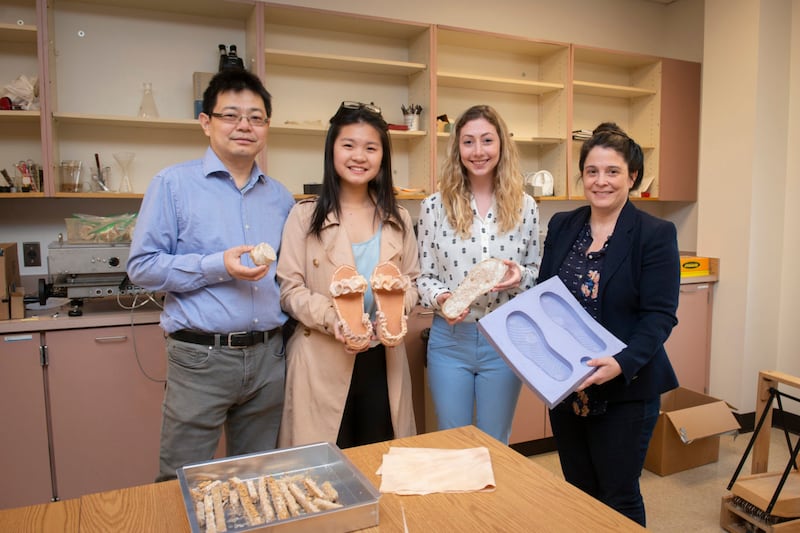
She said: “I used vegetable dyes and 100% cotton thread.
“The design looks like mushrooms look when they’re stacked, and everything is completely biodegradable.”
The researchers are now looking to turn the prototype to a potentially marketable shoe.
